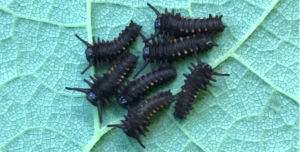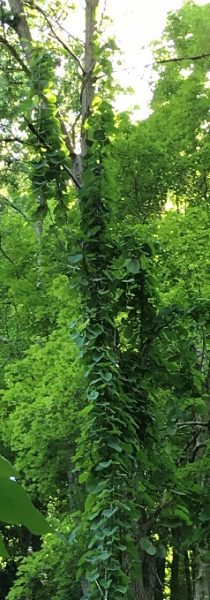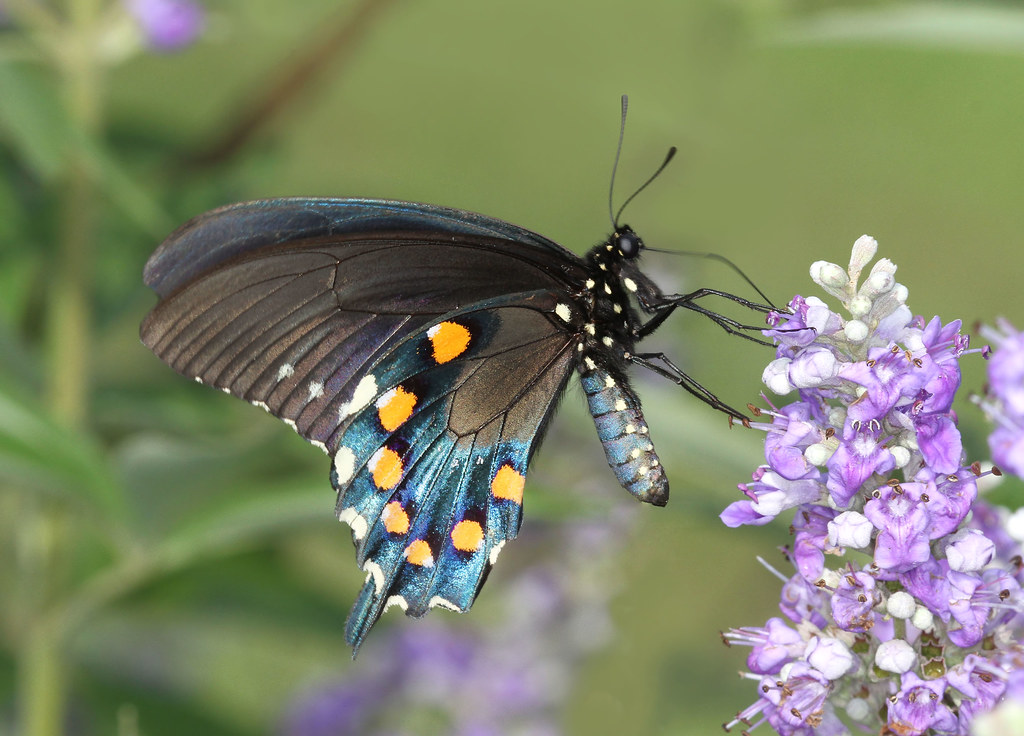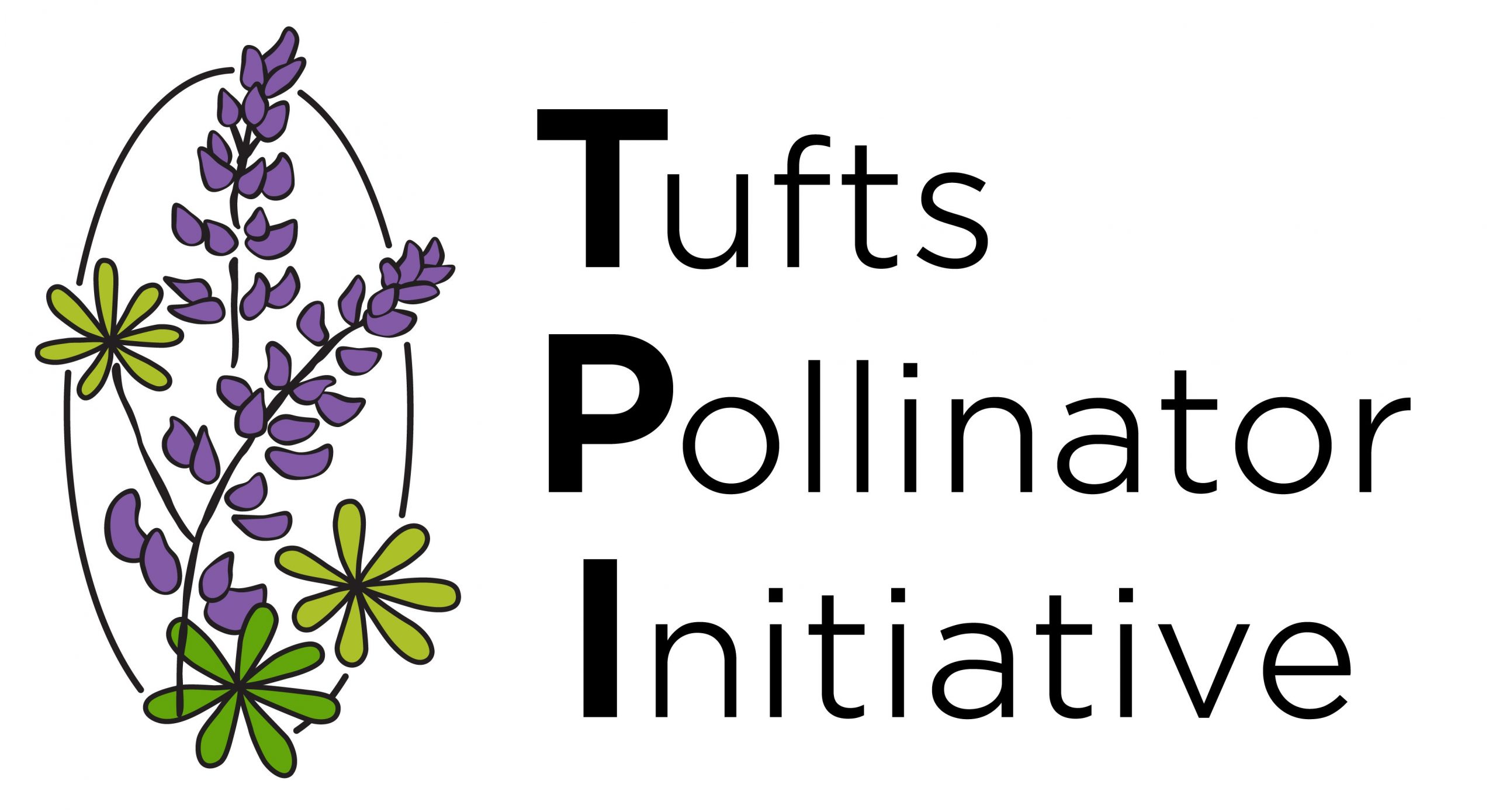When you think of gardening for pollinators, you most likely think of beautiful flowering plants which attract bees, butterflies, and other insects by offering copious amounts of nectar or pollen. But flowers cannot give all pollinators the food they need. Butterflies in particular can be very picky when deciding what to eat when first starting out their lives as caterpillars. Most butterfly species have evolved to specialize feeding on one or a handful host plants. In a sense, when it comes to supporting butterfly communities, providing ample host plants for these soon-to-be-butterflies could be just as beneficial as planting nectar flowers for adults!

The Pipevine swallowtail Battus philenor is one butterfly that benefits tremendously from the gardening of its favorite plant, Pipevine Aristolochia, after which it is named. Both Pipevine and the butterfly with which it shares its name is native across eastern North America, including Massachusetts. The plant itself is highly toxic and could cause severe kidney problems or even cancer if ingested by humans, but Pipevine swallowtail caterpillars could not care less.
These caterpillars have evolved not only to cope with the toxins in the plants, but to actively seek them out. Pipevine swallowtails, like many other butterflies, including Monarchs and their beloved milkweed, acquire the toxic chemicals present in their host plant and sequester them. As caterpillars they build of reserves of this chemical making them unpalatable to potential predators for the rest of their life. This is part of the reason many butterflies display such bright and captivating scales – it can be a signal to predators that nothing good will come from eating them.

Though these caterpillars cannot get enough of Pipevine, the adult swallowtails themselves do not nectar on the flowers it produces. Pipevine, like the name suggests, produces curved flowers that resemble a smoking pipe which is not conducive for a butterfly proboscis. Dutchman’s pipe Aristolochia macrophylla, is the most common species in eastern North America, and produces small tubular flowers with a small circular entryway. Into that entryway go flies which are actually attracted to the flower’s fragrance. Upon entering the narrow pipe, the flies get a little stuck, catching some of the flower’s pollen and carrying it with them until they end up in another flower which they help fertilize. After fertilization, the plant produces great seed pods which, when rooted and grown, will provide more food for those hungry caterpillars.
Before you start thinking this toxic, fly-attracting plant might not be the right fit for your garden, consider that Pipevine has been an immensely popular ornamental plant since Victorian times. It is an ideal option for trellises, fences or pergolas, providing plenty of shade when mature! If you are interested in attracting these beautiful butterflies to your home or garden in the future be sure to water your Pipevine as it needs lots of water and give it a place to climb. Be sure, too, to get Aristolochia macrophylla specifically, as some species will not support these caterpillars or might even be invasive – moreover macrophylla will provide the best shade (it is given the Greek name meaning ‘large leaf’) and will attract some marvelous butterflies looking for the right place to lay their eggs.



hi, I will be searching for pipevines for my pollinator garden. Besides milkweed, spice bush, and oaks are there other flowering perennials that you would recommend as host plants for butterflies? Thank you
Hi Carol, We recommend mountain mints to support gray hairstreaks, ironweeds to support american ladies, golden alexander’s to support black swallowtails, and Symphyotrichum spp. asters to support pearl crescents!
I grow Sweet Everlasting (Pseudognaphalium obtusifolium) as a host plant for American Lady butterflies. The plants love my property and the butterflies have tons of native Texas native nectar plants to choose from!
How wonderful!!